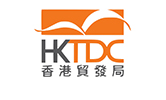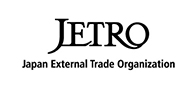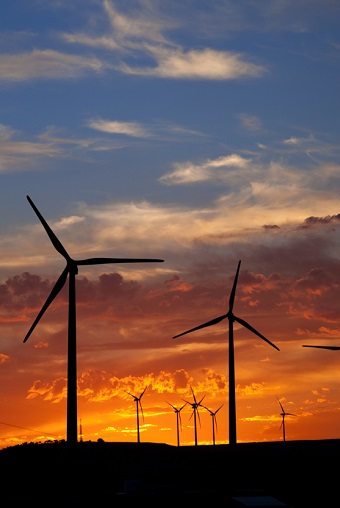Solar Power, Wind Power & Renewable Energy Industry Market Research
Competitive Intelligence, Business Analysis, Forecasts, Market Size, Trends, Companies, Statistics
Available Data Services: Custom Research Projects, Database Subsription or PDF eBooks
PLUNKETT PROVIDES IN-DEPTH STATISTICS TABLES COVERING THE FOLLOWING INDUSTRY TOPICS:
-
Global Renewable Energy Industry Statistics and Market Size Overview
-
U.S. Solar, Wind and Other Renewable Energy Industry Statistics and Market Size Overview
-
Approximate Energy Unit Conversion Factors
-
Energy Production by Renewable Energy, U.S.: Selected Years, 1955-2020
-
Energy Production by Renewable Energy, U.S.: Selected Years, 1955-2023
-
Average Heat Content of Selected Biomass Fuels
-
Biomass Energy Resource Hierarchy
-
Net Electrical Power Generation From Renewable Energy Sources, U.S.: 2000-December 2020
-
Total Renewable Electricity Net Generation by Source & State, U.S.: 2023
-
Comparison of Alternative Fuels with Gasoline & Diesel
-
Estimated Levelized Cost of Electricity (LCOE) for New Electricity Generation by Energy Source
-
U.S. Renewable Energy Consumption by Energy Source, 2017 vs. 2023
-
World Total Primary Energy Consumption by Region: 2018-2050
-
Fuel Ethanol Production & Consumption, U.S.: 1990 - 2023
-
Share of Electricity Generation by Energy Source, U.S.: Projections, 2022-2050
-
Biodiesel Production & Consumption, U.S.: 2002 - 2023
-
Energy Consumption by Source & Sector, U.S.: 2023
-
World Consumption of Hydroelectricity & Other Renewable Energy by Region: 2019-2050
-
Primary Energy Flow by Source & Sector, U.S.: 2023
-
Net Electrical Power Generation by Fuel Type, U.S.: 1990-August 2023
-
Net Electrical Power Generation by Fuel Type, U.S.: 1990-September 2023
-
U.S. Department of Energy Funding for Science & Energy Programs: 2023-2025
-
Federal R&D & R&D Plant Funding for Energy, U.S.: Fiscal Years 2017-2019
-
Federal R&D & R&D Plant Funding for Energy, U.S.: Fiscal Years 2023-2025
-
Net Electricity Generation from Conventional Hydropower by Sector & Region, U.S.: 2018-2019
-
Top 15 U.S. States by Installed Wind Generating Capacity: 1st Quarter 2024
-
Top 10 Countries by Installed Wind Generating Capacity: 2023
-
U.S. Historical Hydroelectric Generation Compared to 20-Year Average for 2000-2019
-
Energy Production by Renewable Energy, U.S.: Selected Years, 1955-2022
-
Renewable Energy Consumption by Source, U.S.: Selected Years, 1960-2019
-
Energy Production by Fossil Fuels & Nuclear Power, U.S.: Selected Years, 1970-2023
-
Renewable Energy Consumption in the Residential, Commercial & Industrial Sectors, U.S.: 2013-2019
-
Renewable Energy Consumption in the Transportation & Electric Power Sectors, U.S.: 2013-2019
-
Net Electricity Generation from Wind by Region, All Sectors, U.S.: 2009-2019
-
Federal R&D & R&D Plant Funding for Energy, U.S.: Fiscal Years 2019-2021
-
The 15 Largest Nuclear Reactors in the U.S.
Top Companies Profiled
The following is a partial listing for this industry. As a subscriber, you will have access to the leading companies and top growth companies. This includes publicly-held, private, subsidiary and joint venture companies, on a global basis as well as in the U.S.
Hundreds of Top Companies Profiled, Including:
PLUNKETT PROVIDES UNIQUE ANALYSIS OF THE FOLLOWING TRENDS THAT ARE DRIVING THIS INDUSTRY:
-
Introduction
-
The Coronavirus’ Effect on the Solar Power, Wind Power & Renewable Energy Industry
-
Small-Scale Solar Panel Installations Soar Through Subsidies, While Solar Cell Costs Plummet
-
Photovoltaic Technologies, Thin-Film Solar and Solar Panel Efficiency
-
Utility-Scale Solar Plants, Including Concentrating Solar Power (CSP), Are Operating, But Costs Are Massive
-
Space Power
-
Wind Power
-
Hydroelectric Power
-
Geothermal Power
-
Biomass, Waste-to-Energy, Waste Methane and Biofuels from Algae
-
Ethanol Production Soared, But U.S. Federal Subsidy Expires
-
Cellulosic Ethanol Makes Slow Commercial Progress
-
Tidal Power
-
Green Hydrogen Draws Major Investment and Development
-
The 2022 Inflation Reduction Act Creates Massive Tax Credits in the U.S.
-
Fuel Cell and Hydrogen Power Research Continues/Fuel Cell Cars Enter the Market
-
Electric Cars and Plug-in Hybrids (PHEVs) Enter the Market in Low Numbers
-
Major Research and Advancements in Lithium Batteries/Tesla and Panasonic Plan Gigafactory
-
Natural Gas-Powered Vehicles Gain in Popularity/Long Term Potential is Bright Thanks to Low Shale Gas Prices
-
Homes and Commercial Buildings Seek Green Certification
-
Nanotechnology Sees Applications in Fuel Cells and Solar Power/Micro Fuel Cells to Power Mobile Devices
-
Smart Electric Grid Technologies Are Adopted
-
Grid Enhancements Are Vital to Power Artificial Intelligence (AI) and Distribute Renewable Energy
-
The Energy Industry Invests in Storage Battery Technologies with an Eye on Distributed Power and Renewables
-
Production of Synthetic Crude from Kerogen Trapped in Shale Advances Through New Technologies
-
Nuclear Energy Moves Ahead in India, China, the UK and the Middle East
-
Small Modular Reactors (SMRs) Will Power Artificial Intelligence (AI)
-
Nuclear Fusion Technologies Might Create Unlimited, Emission-Free Power
-
Energy Intensity Is a Prime Focus in China/U.S. Achieves Dramatic Energy Intensity Results
-
New Display Technologies with PLEDs
-
Electric Utilities Adopt Coal Emissions Scrubbers While the Industry Tests Carbon Capture and Clean Coal Technologies
-
Superconductivity Provides Advanced Electricity Distribution Technology
-
The Future of Solar, Wind and Renewable Energy
Key Findings:
A complete market research report, including forecasts and market estimates, technologies analysis and developments at innovative firms within the Solar Power, Wind Power & Renewable Energy Industry. Gain vital insights that can help shape strategy for business development, product development and investments.
Key Features:
- Business trends analysis
- In-depth industry overview
- Technology trends analysis
- Forecasts
- Spending, investment, and consumption discussions
- In-depth industry statistics and metrics
-
Industry employment numbers
Additional Key Features Include:
Industry Glossary
Industry Contacts list, including Professional Societies and Industry Associations
Profiles of industry-leading companies
- U.S. and Global Firms
- Publicly held, Private and Subsidiaries
- Executive Contacts
- Revenues
-
For Public Companies: Detailed Financial Summaries
-
Statistical Tables
Key Questions Answered Include:
- How is the industry evolving?
- How is the industry being shaped by new technologies?
- How is demand growing in emerging markets and mature economies?
- What is the size of the market now and in the future?
- What are the financial results of the leading companies?
- What are the names and titles of top executives?
-
What are the top companies and what are their revenues?
This feature-rich report covers competitive intelligence, market research and business analysis—everything you need to know about the Solar Power, Wind Power & Renewable Energy Industry.
Plunkett Research Provides Unique Analysis of the Following Major Trends Affecting the Solar Power, Wind Power & Renewable Energy Industry
-
Major Trends Affecting the Solar Power, Wind Power & Renewable Energy Industry
-
Introduction
-
Solar Installations Boom Due to Government Incentives, Tax Credits and Lower Costs
-
Photovoltaic Technologies, Thin Film Solar and Solar Panel Efficiency
-
Utility Scale Solar Power Plants
-
Space Power
-
Wind Power, Including Offshore
-
Hydroelectric Power
-
Geothermal Power
-
Biomass, Waste-to-Energy, Waste Methane and Biofuels from Algae
-
Ethanol Production Soared, But U.S. Federal Subsidy Expired
-
Cellulosic Ethanol Makes Slow Commercial Progress
-
Tidal Power
-
Green Hydrogen Draws Major Investment and Development
-
The 2022 Inflation Reduction Act Creates Massive Tax Credits in the U.S.
-
Fuel Cell and Hydrogen Power Research Continues/Fuel Cell Cars Enter Market
-
Electric Cars and Plug-in Hybrids (PHEVs) See Massive New Investments by Auto Makers
-
Major Technology Research in Batteries/Massive Investments in Battery Factories and Power Storage
-
Natural Gas-Powered Vehicles Gain in Popularity/Long Term Potential Is Bright Thanks to Low Shale Gas Prices
-
Homes and Commercial Buildings Seek Green Certification
-
Smart Electric Grid Technologies Are Adopted/Massive Utilities Investment Needed
-
Grid Enhancements Are Vital to Power Artificial Intelligence (AI) and Distribute Renewable Energy
-
Storage Battery Technologies and Installations Boom Worldwide
-
Safer Nuclear Power Plants Under Construction in Many Nations
-
Small Modular Reactors (SMRs) Will Power Artificial Intelligence (AI)
-
Nuclear Fusion Technologies Might Create Unlimited, Emission-Free Power
-
New Display Technologies with PLEDs
-
Electric Utilities Adopt Coal Emissions Scrubbers While the Industry Tests Carbon Capture and Clean Coal Technologies
-
Superconductivity Provides Advanced Electricity Distribution Technology
-
The Future of Solar, Wind and Renewable Energy
Plunkett Research Provides In-Depth Tables for the Following Solar Power, Wind Power & Renewable Energy Industry Statistics
-
Global Alternative Energy Industry Statistics and Market Size Overview
-
U.S. Solar, Wind and Other Renewable Energy Industry Statistics and Market Size Overview
-
Approximate Energy Unit Conversion Factors
-
Biomass Energy Resource Hierarchy
-
Comparison of Alternative Fuels with Gasoline & Diesel
-
World Total Primary Energy Consumption by Region: 2018-2050
-
Share of Electricity Generation by Energy Source, U.S.: Projections, 2022-2050
-
Energy Consumption by Source & Sector, U.S.: 2023
-
Primary Energy Flow by Source & Sector, U.S.: 2023
-
Net Electrical Power Generation by Fuel Type, U.S.: 1990-August 2023
-
Energy Production by Renewable Energy, U.S.: Selected Years, 1955-2023
-
U.S. Renewable Energy Consumption by Energy Source, 2017 vs. 2023
-
Fuel Ethanol Production & Consumption, U.S.: 1990 - 2023
-
Biodiesel Production & Consumption, U.S.: 2002 - 2023
-
Top 10 Countries by Installed Wind Generating Capacity: 2023
-
Top 15 U.S. States by Installed Wind Generating Capacity: 1st Quarter 2024
-
U.S. Department of Energy Funding for Science & Energy Programs: 2023-2025
-
Federal R&D & R&D Plant Funding for Energy, U.S.: Fiscal Years 2023-2025




















